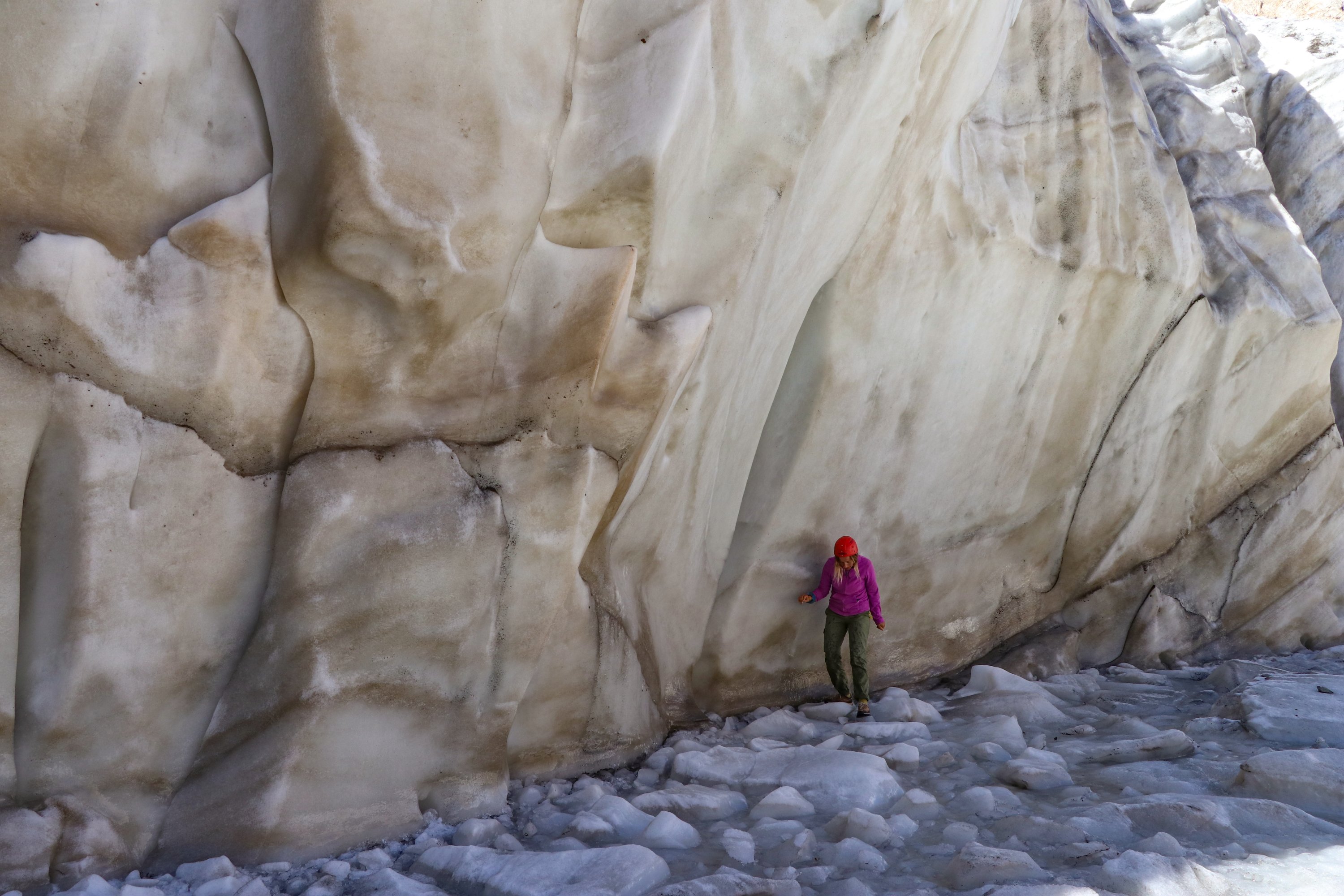© Turkuvaz Haberleşme ve Yayıncılık 2026
Cilo, Turkey’s third highest mountain with a height of 4,116 meters (13,500 feet), is feeling the impact of climate change, which eats away its glacier.
The mountain range, stretching between the central region of the southeastern Turkish province of Hakkari and its Yüksekova district and home to a national park, hosts the country’s largest valley glacier. The glacier was granted status as a "sensitive area" for its preservation two years ago, while scientists examining the state of the glacier detected the rate of melting in the past three decades to be at 48%.
The state of the glacier was mentioned by Environment, Urban Planning and Climate Change Minister Murat Kurum during his speech at Turkey’s first Climate Council held in the central province of Konya last week. Kurum had noted that the 20,000-year-old glacier was melting away day by day as a result of climate change.
The glacier, a popular destination for climbers, is a shadow of its former self, according to researchers.
Associate professor Onur Şatır of Van Yüzüncü Yıl University, who is among the researchers studying the glacier, says the effect of global warming is "clear."
"The losses disrupted the integrity of the glacier and it appears they will continue in the future as well," he told Anadolu Agency (AA) on Monday. Şatır noted only about 530 hectares (1,310 acres) of ice remained intact in the area where the glacier is located. A study by Şatır and fellow researchers showed masses of ice on the slopes exposed to direct sunlight had overwhelmingly melted. "This process, unfortunately, divides the glacier, and every part separated from the main body is subject to a faster melting process," he said.
The glacier stretches across an area of about 7,500 hectares and Şatır says preservation efforts were vital to prevent further losses. "The human factor combined with global warming may accelerate melting," he said.
Professor Mehmet Nuri Bodur from Hakkari University, who studied climate change in Turkey’s 2018 expedition in Antarctica, says climate change affects all glaciers in the country. "Turkey is home to glaciers dating back to about 2 million years ago. Our latest observations show the melting process is accelerating. This is leaving a great impact both on microclimates and the ecosystem. It also affects agriculture and animal husbandry," he said. Bodur pointed out that climate conditions in the region where Cilo is located are more exposed to drought nowadays. "Glaciers are shrinking more compared to the past years," he warned.

Ali Kemal Atlı, who heads the Ministry of Environment, Urban Planning and Climate Change’s Van directorate in charge of the preservation of Cilo and its environs, says they were striving to protect the glacier. "This place was declared a preservation area in 2019 and is closed to any type of human intervention," he said.
According to the World Wildlife Foundation (WWF), more than a third of the world's remaining glaciers will melt before 2100 even if mankind manages to curb emissions from the burning of fossil fuels. Ice-covered surfaces of Earth reflect excess heat back into space, and if these are reduced through melting, temperatures rise even more. Melting glaciers also add to sea-level rise, which increases coastal erosion and elevated storm surges. And water dammed by glaciers can be released by a sudden collapse.
The amount of ice in glaciers around the world is 20% less than predicted, which could put a strain on populations that depend on those glaciers for freshwater, according to a new study published this month in Nature Geoscience, a monthly peer-reviewed scientific journal. From analyzing more than 800,000 pairs of images of glaciers taken in 2017-2018, the study "found that many were shallower than previously assessed." "Scientists now estimate there is 20% less glacial ice present with the potential to melt into the ocean and raise sea levels," it reported.
However, since Greenland and Antarctica (not included in the study) are the main engines of sea level rise, the new data is not expected to have a large impact on that threat. In contrast, some 1.9 billion people who depend on glacial runoff for drinking water and agriculture could feel the pinch as global warming melts away those sources of water. According to the study, while Asia's Himalayas contain 37% more ice than previously estimated, South America's Andean glaciers contain roughly 27% less ice.
The lead author of the research, Romain Millan, a glaciologist at French-based Grenoble Alpes University, said high-resolution satellites enabled them to do the first analysis of how 98% of the world's glaciers are moving, from small glaciers in the Andes to massive glaciers in Svalbard, Norway and Patagonia, at the tip of South America. The parts of the world set to be most affected are the Andes, he added.
